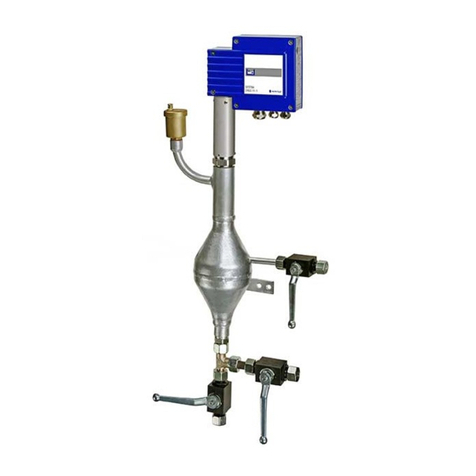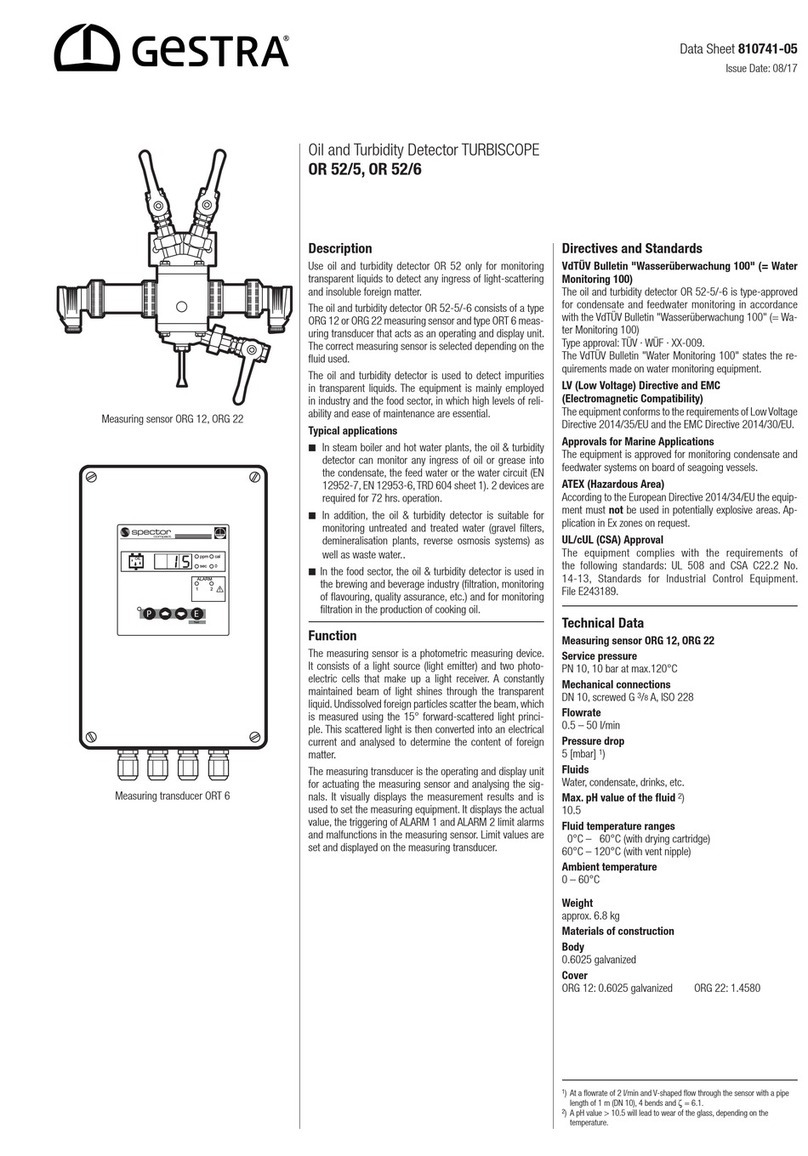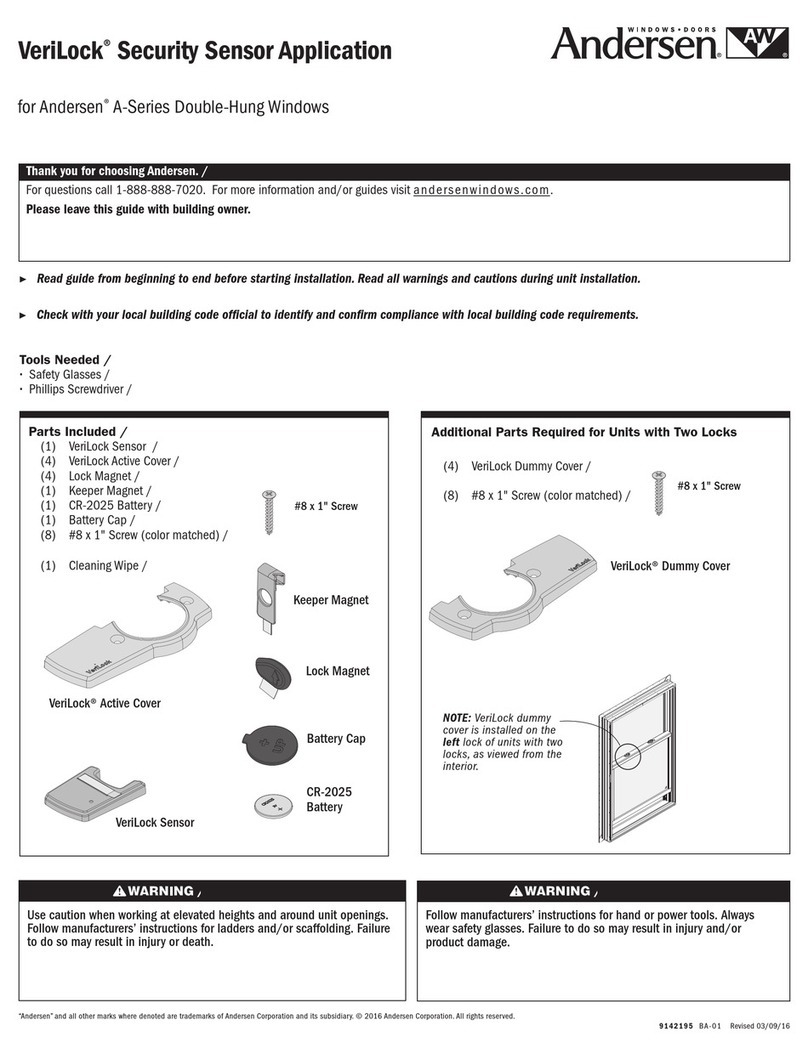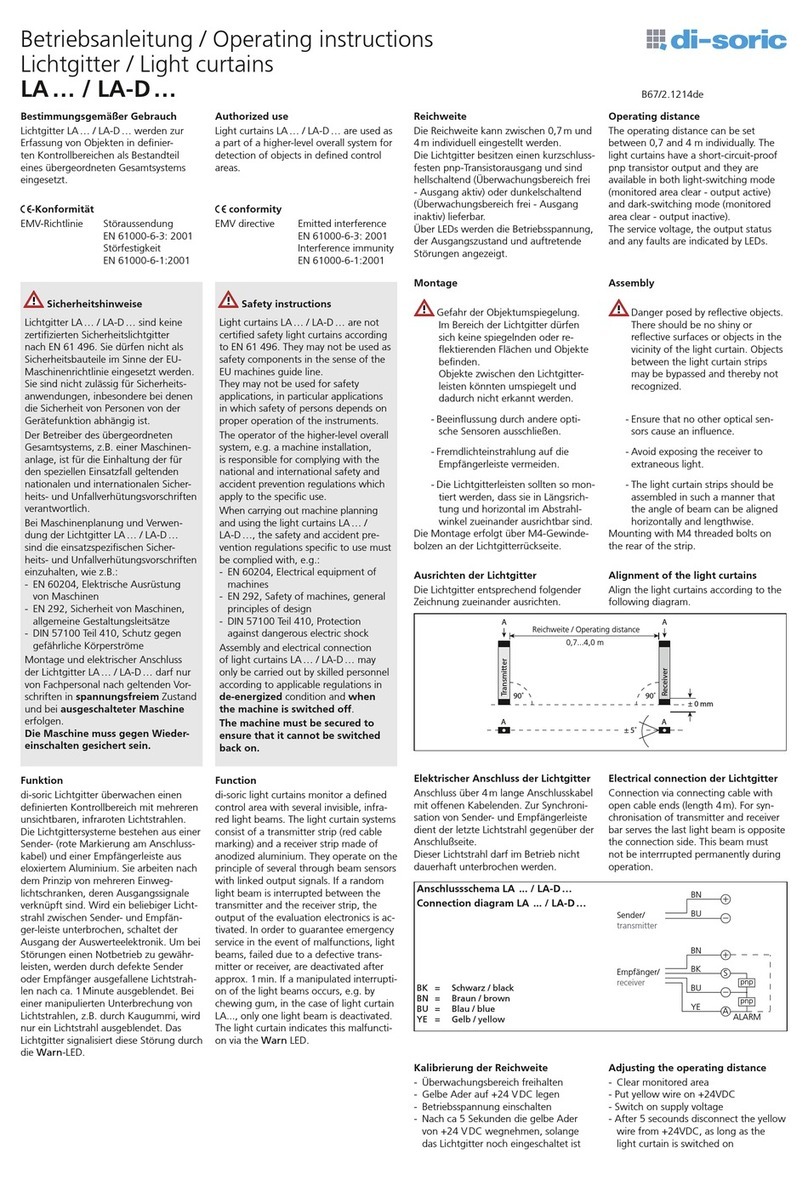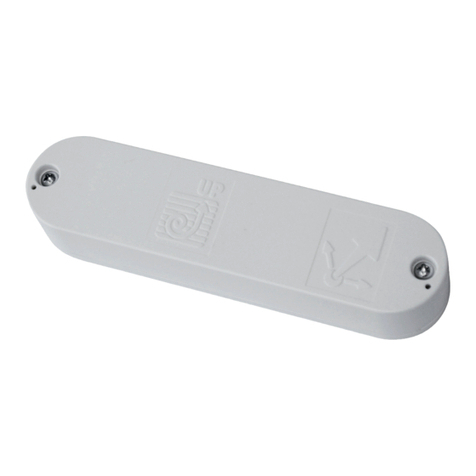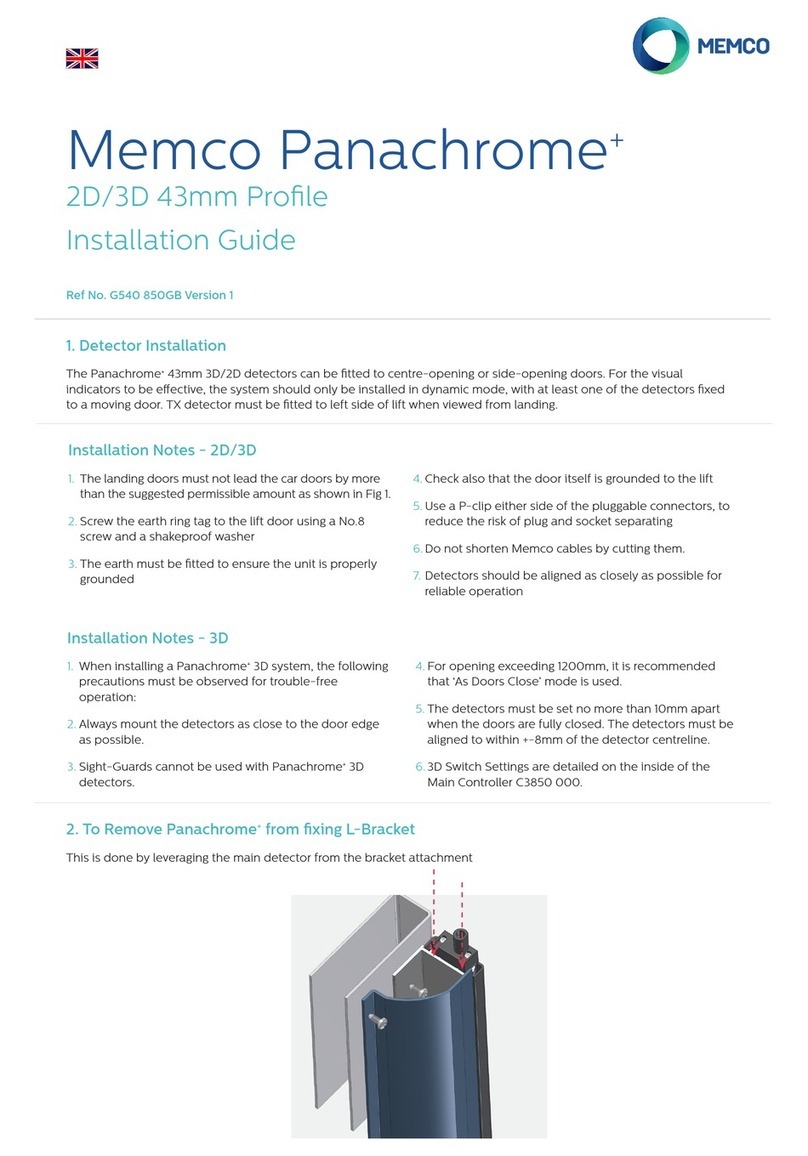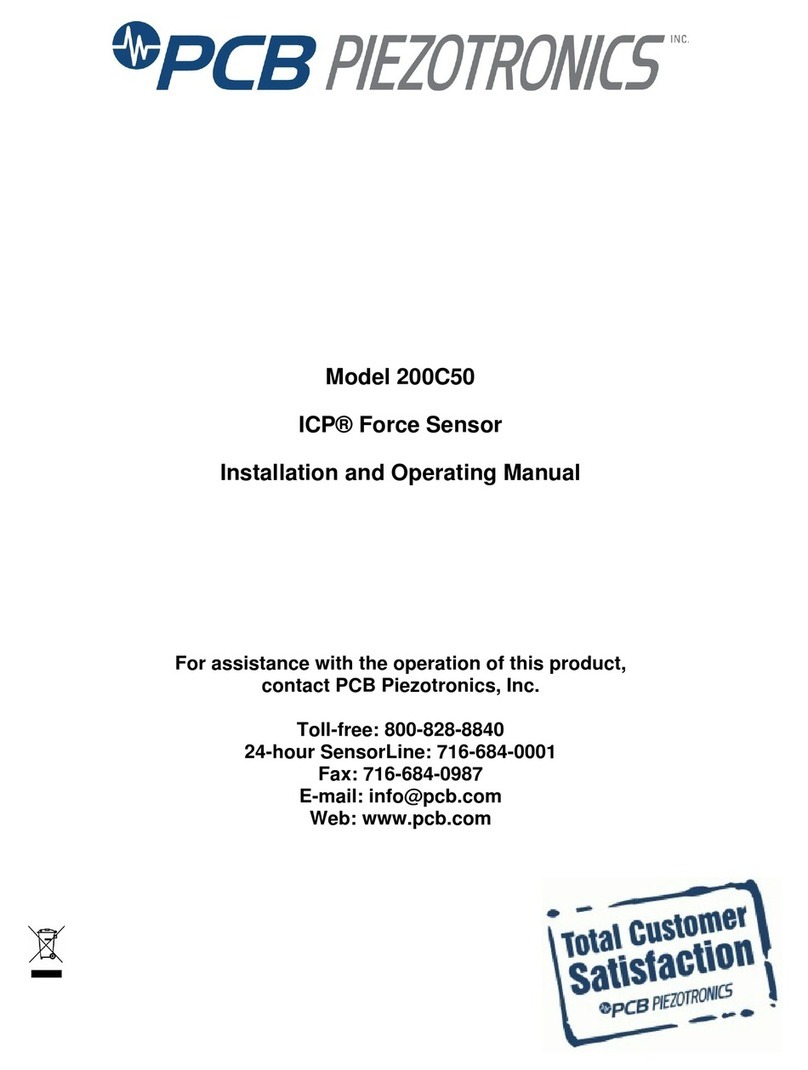GESTRA OR 52-7 User manual

1
Installation Instructions 818788-01
Oil & Turbidity Detector
OR 52-7
GESTRA Steam Systems
OR 52-7 EN
English

2
Contents
Important Notes
Usage for the intended purpose ..............................................................................................................4
Safety note .............................................................................................................................................4
Danger ...................................................................................................................................................4
Explanatory Notes
Scope of supply ...................................................................................................................................... 5
Description .............................................................................................................................................5
Function .................................................................................................................................................5
Page
Functional Elements
Measuring sensor ORG 12 .................................................................................................................... 14
Measuring sensor ORG 12 / Measuring transducer ORT 7 ..................................................................... 15
Measuring transducer ORT 7.................................................................................................................16
Key.......................................................................................................................................................17
Commissioning
Factory settings ....................................................................................................................................18
Warning................................................................................................................................................ 18
Checking electrical connection .............................................................................................................18
Checking installation.............................................................................................................................18
First commissioning ............................................................................................................................. 19
Programming mode ..............................................................................................................................20
Other parameter settings ......................................................................................................................21
Technical Data
Measuring sensor ORG 12 ..................................................................................................................... 6
Measuring transducer ORT 7...................................................................................................................7
Name plate / Marking ............................................................................................................................. 8
Dimensions OR 52-7............................................................................................................................... 9
Installation
OR 52-7................................................................................................................................................10
Example of Installation.......................................................................................................................... 11
Electrical Connection
Measuring transducer ORT 7 ................................................................................................................12
Note .....................................................................................................................................................12
Attention............................................................................................................................................... 12
Tools.....................................................................................................................................................12
Wiring diagram OR 52-7 .......................................................................................................................13
Notice ..................................................................................................................................................13

3
Contents – continued –
Malfunctions
OR 52-7................................................................................................................................................26
Table listing error codes.......................................................................................................................26
Page
Data storage
Memory Card........................................................................................................................................24
Note .....................................................................................................................................................24
Data indication .....................................................................................................................................24
Operating steps - see Fig. 9 .................................................................................................................24
Note .....................................................................................................................................................25
Operation flowchart ..............................................................................................................................25
Start, Operation, Alarm and Functional Test
Start and operation ...............................................................................................................................22
Alarm 1 and 2 ......................................................................................................................................23
Fucntional test .....................................................................................................................................23
Maintenance
Cleaning the glass cylinder .................................................................................................................. 27
Replacing the drying cartridge ..............................................................................................................27
Replacing the light emitter/receiver ......................................................................................................27
Replacing the equipment fuse .............................................................................................................. 27
Replacing glass cylinder .......................................................................................................................28
Replacing the plunger of the cleaning device ........................................................................................ 28
Spare Parts
Spare parts kit ..................................................................................................................................... 30
5 years inspection package ..................................................................................................................30
Checking the Accuracy of Measurement
OR 52-7................................................................................................................................................29
Annex
Type approval certificate...............................................................................................................32 – 35
EC Prototype Test Certificate (module B)..........................................................................................36, 37
EC Type Examination (Module B) Certificate .................................................................................... 38, 39
Declaration of Conformity .....................................................................................................................40
Decommissioning
Warning................................................................................................................................................ 31
Dismantling ..........................................................................................................................................31
Disposal................................................................................................................................................31

4
Important Notes
Usage for the intended purpose
The oil & turbidity detector OR 52-7 is designed for the continuous monitoring and detection of ingress
of oil in water and is used in conjunction with oily water separators as 15 ppm bilge alarm.
The equipment meets the requirements of the International Maritime Organization (IMO) for bilge alarm
monitors, MEPC. 107 (49).
Danger
The coil of the solenoid valve Clw can reach up to 80 °C during continuous operation!
The terminal strips of the measuring transducer ORT 7 can be live during operation!
This presents the risk of severe cases of electric shock!
Always cut off power supply to the equipment before mounting, removing or connecting
the terminal strips!
Safety note
The equipment must only be installed and commissioned by qualified and competent staff.
Retrofitting and maintenance work must only be performed by qualified staff who – through adequate
training – have achieved a recognised level of competence.

5
Explanatory Notes
Scope of supply
Measuring transducer ORT 7
Measuring sensor ORG 12 with
1 Solenoid valve
1 Drying cartridge (fitted)
1 Throttle (supplied but not fitted)
1 Accessory box: Content: 1 incandescent lamp (= light emitter)
1 Installation manual
Description
The oil & turbidity detector OR 52-7 can be used:
n On board of marine vessels for monitoring the oily water separating equipment for bilge water
according to IMO Resolution MEPC. 107 (49) as 15 ppm oil content alarm.
Function
The measuring sensor is a photometric measuring device consisting of a light source (light emitter)
and a light receiver fitted with two photosensitive elements.
The constant light beam generated in the measuring sensor passes through the transparent liquid. Any
foreign matter which is not dissolved scatters the beam, with emulsified oils scattering the light mainly
in the forward direction. The intensity of the scattered light is converted into an electric current and then
used as measure of the degree of contamination.
The measuring transducer has the following functions:
nControl of the measuring sensor and signal evaluation,
nControl of the purging valve,
nIndication of limit ALARM 1 and ALARM 2,
nAnalog actual value output 0/4-20 mA,
nIndication of malfunctions in measuring sensor and via ALARM 2,
nIndication of actual value and limits,
nStorage and indication of alarm, malfunction and status messages,
nControl of the bilge bypass via output ALARM 2.

6
Technical Data
Measuring sensor ORG 12
Nominal size
DN 10, connections G 3/8ISO 228
Nominal pressure
PN 10
Fluid
Water
pH value
Up to 10.5 (a pH value of 11 and above will lead to wear of the glass, depending on the temperature).
Fluid temperature range
0 ... 60 °C (with drying cartridge)
Ambient temperature
Max. 60 °C
Materials
Measuring sensor ORG 12
Cover 0.6025 galvanized
Wetted parts 0.6025 galvanized
Throttle 1.4571
Screwed union St
Glass cylinder Duran 50
Internal seals: Silicone
Oil-seal rings Perbunan
Body 0.6025 galvanised
Cleaning ring EPDM sponge rubber
Light emitter
Incandescent lamp
Electrical connection via 4 m connecting cable fitted with four pole connector
Protection IP 65
Light receiver
Two silicon photoelectric cells
Electrical connection via 4 m connecting cable fitted with four pole connector
Protection IP 65
Purging valve
2/2 way solenoid valve
Directly controller, normally closed type
Connection G 3/8ISO 228
Valve body Brass
Internals Ms 2.0401 / S. S. 1.4104
Internal seal FKM
Solenoid Voltage 24 V / 50 Hz, 43/24 VA
Electrical connection via 4 m connecting cable fitted with four pole connector
Protection IP 65
Weight
ORG 12 approx. 6.8 kg

7
Technical Data - continued -
Measuring transducer ORT 7
Inputs / Outputs
2 Photocells for inputs: directly transmitted light / scattered light
1 Voltage output for light emitter, 1 - 12 V pulse-amplitude modulated
1 Signal input for separator ON/OFF
1 GPS input RS 485, 4800 baud, NMEA 183 protocol, data record: GPRMC (optional)
3 Volt-free relay contacts for alarm 1, 2 and purging valve (Clw)
Contact material AgNi 0,15
Max. contact rating for switching voltages 24 V AC/DC, 115 V AC and 230 V AC: resistive / inductive 4 A
1 Current output 0/4-20 mA as actual value output, max. load 500 ohm.
Indicators and adjustors
1 LCD display for indicating the actual value, limits, status and malfunction
8 Membrane keys
4 LEDs for indicating alarm, status and malfunction
3 green LEDs on basic circuit board for monitoring the operating voltages.
Data storage
DataFlashcard 8 MB
Measuring range
0-25 ppm (ppm = parts per million).
Actual value output
0 or 4 mA = 0 ppm; 20 mA ≥ 25 ppm.
Limits for alarm 1 and 2, adjustment range
adjustable between 0 and 15 ppm.
Delay of response for alarm 1 and 2, adjustment range
adjustable between 0 and 15 sec.
Mains voltage
24 V +10 /– 15 %, 50 – 60 Hz
230 V +10 /– 15 %, 50 – 60 Hz (optional)
115 V +10 /– 15 %, 50 – 60 Hz (optional)
Power consumption
50 VA
Fuse
24 V: Thermal fuse M 1.6 A 5 x 20
230 V: Thermal fuse M 0.2 A 5 x 20
115 V: Thermal fuse M 0.4 A 5 x 20
Body
Field case for wall mounting
Housing material: die-cast aluminium
Cable gland / Electrical connection
8 Cable glands with integrated cable clamps M 16 x 1.5
3 Three-pole screw-type terminal strips, conductor size 0.75 mm2
8 Multi-pole screw-type terminal strips. detachable, conductor size 1.5 mm2
Protection
IP 65 to DIN EN 60529
Admissible ambient temperature
0 – 55 °C
Weight
approx. 3.6 kg

8
Technical Data – continued –
Name plate / Marking
Fig. 1
Equipment designation
Manufacturer
Type designation
MED marking
Electrical specification, protection
Disposal note
Measuring range
Safety note
Serial number
Material number
Ambient temperature

9
Technical Data – continued –
Dimensions OR 52-7
Measuring sensor ORG 12
Measuring transducer ORT 7
Fig. 2
approx. 200 approx. 170
approx. 225
240
260
110
160

10
Installation
OR 52-7
Use the support to install the measuring sensor ORG 12 as close as possible to the separator in order
to keep the supply delay to a minimum. According to MEPC. 107 (49) in the event of an alarm
(oil content > / = 15 ppm) the contaminated water must be diverted from the separator to the bilge as
quickly as possible, i. e. within no more than 20 seconds.
Use a 10x1 mm copper or stainless steel pipe to connect the measuring sensor ORG 12 with the
sampling point of the separator and the clear water supply. The sampling point should be provided in
a vertical section of the separator outlet pipe so as to avoid any impairment caused by air bubbles. In
order to ensure that the arrangement for the extraction of samples gives a truly representative sample
make sure that the fluid flow always passes through the sensor under all operating conditions and
that any by-passing of the oil separator is prevented.
If it is not possible to provide the sampling point in a vertical pipe, a lateral arrangement in a horizontal
pipe is also possible.
For overboard pipes with an outside diameter of up to 75 mm a tee piece for the extraction of samples
can be used. if the size of the pipe exceeds 80 mm, make sure that the sampling arrangement ex-
tends approx. 25 % into the overboard line.
Install the vacuum breaker above the highest point of the oil separator.
Attach the measuring transducer ORT to a stable vertical surface.+ If possible, mount the indicator at
eye level for easy viewing and provide sufficient withdrawal space for servicing and maintenance.
The measuring transducer is designed for wall mounting. The distances between the fixing holes are
indicated on the back of the equipment.
To access the fixing holes undo the cover screws and open the cover.

11
Installation - continued -
Example of Installation
Three-way valve Overboard line
To bilge To bilge
Pressure
maintaining
valve
(if required)
Mount
vacuum
breaker
above
the oil
separator
10x 1 mm
copper or stainless steel pipe
Inlet Outlet
To
bilge
Separator
Separator
outlet
Clear water
inlet (water
pressure
≥ 2.5 bar)
Fig. 3

12
Electrical Connection
Measuring transducer ORT 7
1. Undo cover screws and open cover.
2. Detach all three-pole terminal strips from the base board and pull connecting lines through cable
glands.
3. Mark connecting lines: “Mains”, “Alarm 1”, “Alarm 2”, “Light emitter” and “Light receiver”.
4. Connect all terminal strips in accordance with the wiring diagram. Connect screens only to ORT 7.
5. Connect PE with the earthing screw in the body.
6. Re-attach terminal strips.
7. Tighten the cable glands in order to seal the cable entry. Use the supplied sealing plugs to seal off
any unused cable glands.
8. Close cover and tighten cover screws.
Attention
nThe oil & turbidity detector has a max. power consumption of 50 VA. Please make
sure that the power supply is rated for 100 VA.
nTo protect the output relay contacts fuse electric circuits with 2.5 A (slow.blow).
nProvide connected contactors and actuators with RC combinations (in accordance with
manufacturers’ specifications) in order to suppress interference.
nMake sure that the disconnecting switch Fig. 4 is easily accessible and in the close
proximity of the equipment (EN 61010-1).
nMark respective switch as disconnecting device for the measuring transducer.
This switch can be dispensed with if the control cabinets are upstream of the equipment
and fitted with a disconnector for the measuring transducer.
Note
n The light emitter/receiver and the purging valve are fitted with a 4 m long connecting
cable and only have to be connected to the measuring transducer.
nThe terminal strips on the CPU board of the ORT 7 cannot be detached.
nStrip off approx. 25 mm of the cable end insulation and screen of the connecting
cables for the signal input of the separator ON/OFF and for the GPS input.
Tools
nScrewdriver for cross recess head screws, size 1 and 2.
nScrewdriver for slotted screws, size 2.5, completely insulated according to VDE 0680.
nCrimping plies for end sleeves
nInsulation stripper

13
Electrical Connection - continued -
Wiring diagram OR 52-7
Fig. 4 Drawn position of contacts: Alarm 1 and 2, separator OFF and voltage failure
Notice
Fig. 4 shows an example where the water will be run back to the ship’s bilge in the event of an alarm
(oil content > 15 ppm) or auxiliary power failure.
With different limit settings alarm contact 1 can, for instance, be used for the first alarm and alarm
contact 2 for the main alarm.
For bilge water monitoring a pneumatic three-way valve can be controlled by the alarm contact 2 via a
solenoid valve. If the turbidity of the effluent is too high (alarm caused by ingress of oil or dirt particles
introduced into the system during start-up) the three-way valve will divert the contaminated water to
the bilge tank. The separation continues until the oil content falls below 15 ppm and the cleaned water
can be discharged overboard.
External wiring Measuring sensor
Disconnecting
switch
External
wiring
Purging valve
to first alarm
Attached in cover
Solenoid valve Three-way valve
Earthing screw
in housing
PE L N
N
L

14
Fig. 5
Functional Elements
Measuring sensor ORG 12
f
34
7
1
1
8
9
n
m
d
e
c
b
a
0
g
h
i
j
l
f
5
2
k
6

15
Functional Elements
Measuring sensor ORG 12 / Measuring transducer ORT 7
Fig. 6
p
n
m
o
9
e
q

16
Functional Elements - continued -
Measuring transducer ORT 7
Fig. 7
ON ALARM 1 ALARM 2 SYSTEM
GESTRA
ORT 7
OKP
4
v
u
t
s
r
Fig. 8
yxw
z

17
Functional Elements - continued -
Key
1Connector for light emitter / light receiver
2Gasket for connector
3Light emitter
4Incandescent lamp
5O-ring 48 x 2.5
6Union nut (inside)
7Tube of light emitter
8Light receiver
9Body
0Glass cylinder
aO-ring 25 x 3
bO-ring 30 x 2
c O-ring 37 x 2
dCover
eThrottle
fHexagon-head screw M 8 x 30 EN 24017
gLocking ring 19 x 1.2
hRing
iCleaning ring
jPlunger
kQuick fixing ring
lBase
mCleaning device
nDrying cartridge
oPurging valve Clw
pMeasuring transducer ORT 7
qCable glands
rLCD display
sSystem LED
tKeypad
uLED Power ON
vLED Alarm 1 and 2
wCard holder for memory card
xMemory card
yCircuit board ORT 7 CPU
zTerminating resistor for GPS interface

18
Commissioning
Factory settings
The mesuring transducer features the following factory set default values:
n Limit alarm 1: 15 ppm
n Limit alarm 2: 15 ppm
n Delay of response alarm 1: 1 sec.
n Delay of response alarm 2: 1 sec.
Warning
The terminal strips of the measuring transducer ORT 7 can be live during operation!
This presents the risk of severe cases of electric shock!
Cut off power supply to equipment before opening the cover!
Checking electrical connection
Before commissioning the equipment:
n Check the connection of the supply voltage.
n The rated voltage is indicated on the name plate.
n Make sure that the connections of the signal inputs and alarm contacts are in accordance with the
wiring diagram.
Checking installation
n Check all pipe connections for leaks and eliminate any leaks you encounter.
n Unscrew the drying cartridge and remove the seal. Then screw the cartridge in again.

19
Commissioning – continued –
First commissioning
1. Apply mains voltage to the measuring transducer. The
green LED ON will be illuminated and alarm 2 is signalled.
2. When the equipment is switched on, the system window
appears for approx. 3 seconds, indicating the following:
Name of equipment,
Certificate,
Serial number,
Number of software version.
3. After approx. 3 seconds the measurement window
appears, indicating the following:
Oil content (in large characters),
State: Warm up
Current time / date IN UTC
4. After approx. 30 seconds the actual value in ppm is
indicated in the measurement window. If this value is
below 15 ppm the message Alarm 2 is cancelled and the
equipment status “Ready” is indicated. If, however, the
value continues to exceed 15 ppm, the message Alarm 2
remains active and the equipment status “ppm>Limit” is
indicated.
5. Press now key +. The purging valve opens and Alarm
2 is indicated. The equipment status “Clear Water ON”
appears. Rinse the measuring sensor ORG 12 for at least
15 minutes with oil-free water and operate the cleaning
device m 2 - 3 times, Fig. 5. During the rinsing process
with oil-free water the measurement window should
show 0 ppm. If this is not the case switch to programming
mode, Paramter Value Offset, and reduve the zero point by
a max. of 5 ppm.
6. To close the purging valve press key –. The equipment
status “Ready” of “ppm>Limit” or any other alarm
message is indicated.
Note that in the measurement window the keys and and “OK” do not have a function.
If you want to enter the programming mode press key P.
OIL CONTENT :
ppm
State: WarmUp
8
UTC 10:46 2006-12-06
OIL CONTENT :
ppm
State: ready
8
UTC 10:46 2006-12-06
OIL CONTENT :
ppm
State: ClearWater ON
0
UTC 10:46 2006-12-06

20
The following parameters can be selected and, if required, changed:
Value Offset (reduction of zero point 0-5 ppm),
Output (output of actual value 0 / 4-20 mA),
Alarm 1 Limit Value (limit alarm 1, 0-15 ppm),
Alarm 2 Limit Value (limit alarm 2, 0-15 ppm),
Alarm 1 Time Delay (delay of response for alarm 1, 0-15 sec),
Alarm 2 Time Delay (delay of response for alarm 2, 0-15 sec),
Datalog Export (for transferring the stored data to a PC by means of PC software).
1. Press key P to enter the programming mode. The amber
system LED will be illuminated and the window showing
the parameter that was changed last appears.
2. Press or to scroll forwards / backwards until the
desired parameter is shown.
3. Press key P(P = change) to activate the parameter
change. To quit the programming mode without any
changes press key OK (OK = back). The window that was
active before you switched the mode will reappear.
4. After having activated the parameter change by press-
ing key P use the keys +/- to adjust the value within the
permissible limits.
5. To cancel the new settings press key P (P = abort). The old
value will then remain active.
6. To confirm and activate the new value press key OK
(OK = confirm). The parameter window appears again.
7. Press key OK (OK = back) to quit the programming mode.
The window that was active before you switched the mode
will reappear.
Programming mode
Commissioning – continued –
Parameter
act Value Offset
Value : 0 ppm
= prev = next
= backOKP = change
Parameter
act Value Offset
Value : 2 ppm
= inc Para = dec Para
= confirmOKP
+
= abort
Parameter
act Value Offset
Value : 2 ppm
= prev = next
= backOKP = change
Table of contents
Other GESTRA Security Sensor manuals
Popular Security Sensor manuals by other brands

Pilz
Pilz PNOZ m1p operating manual
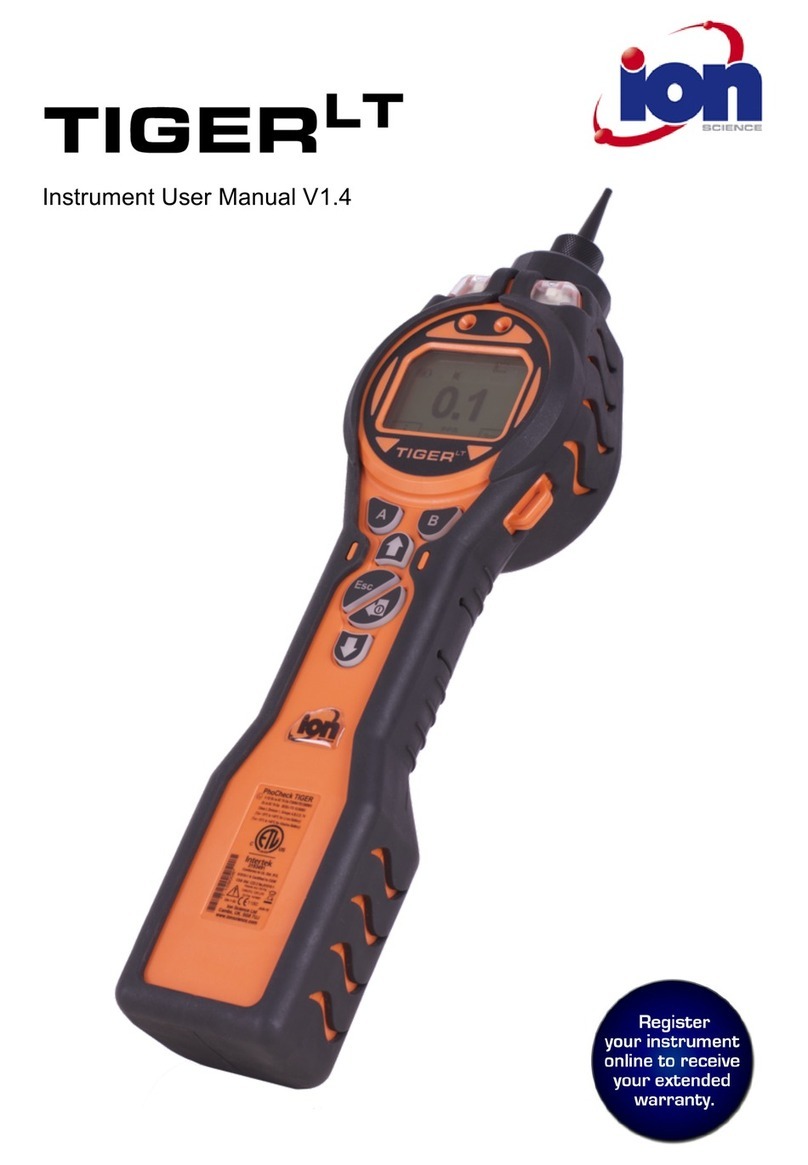
ion science
ion science TIGER LT user manual
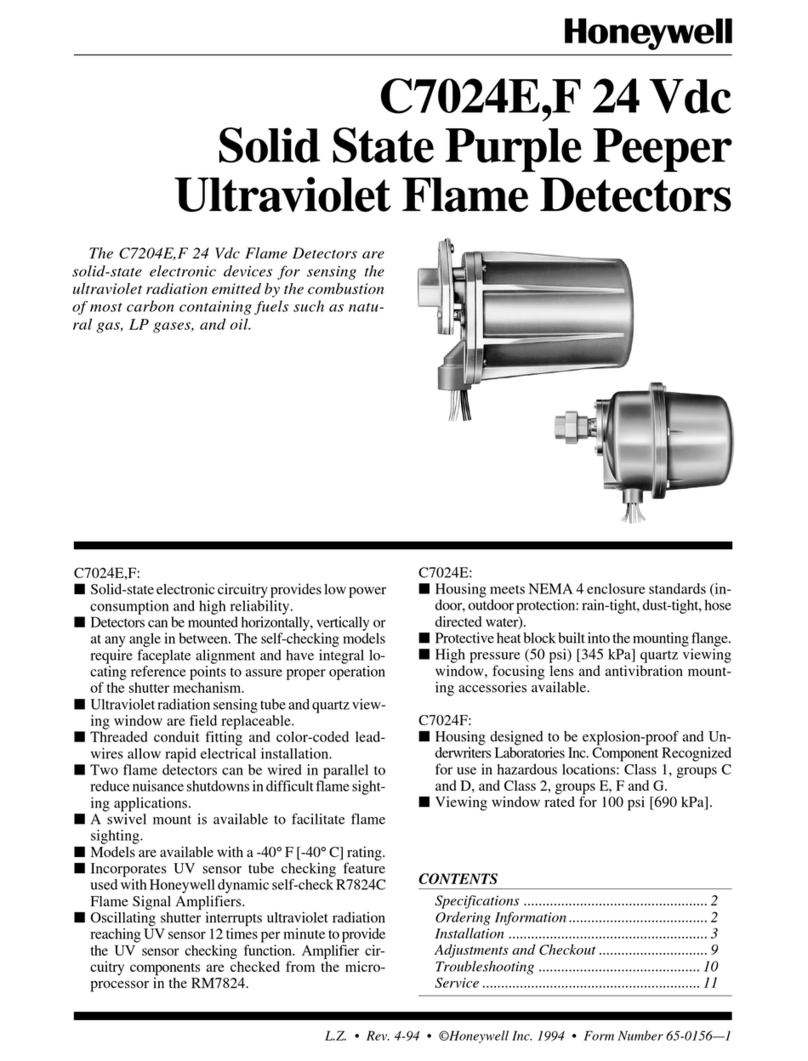
Honeywell
Honeywell C7024E user manual
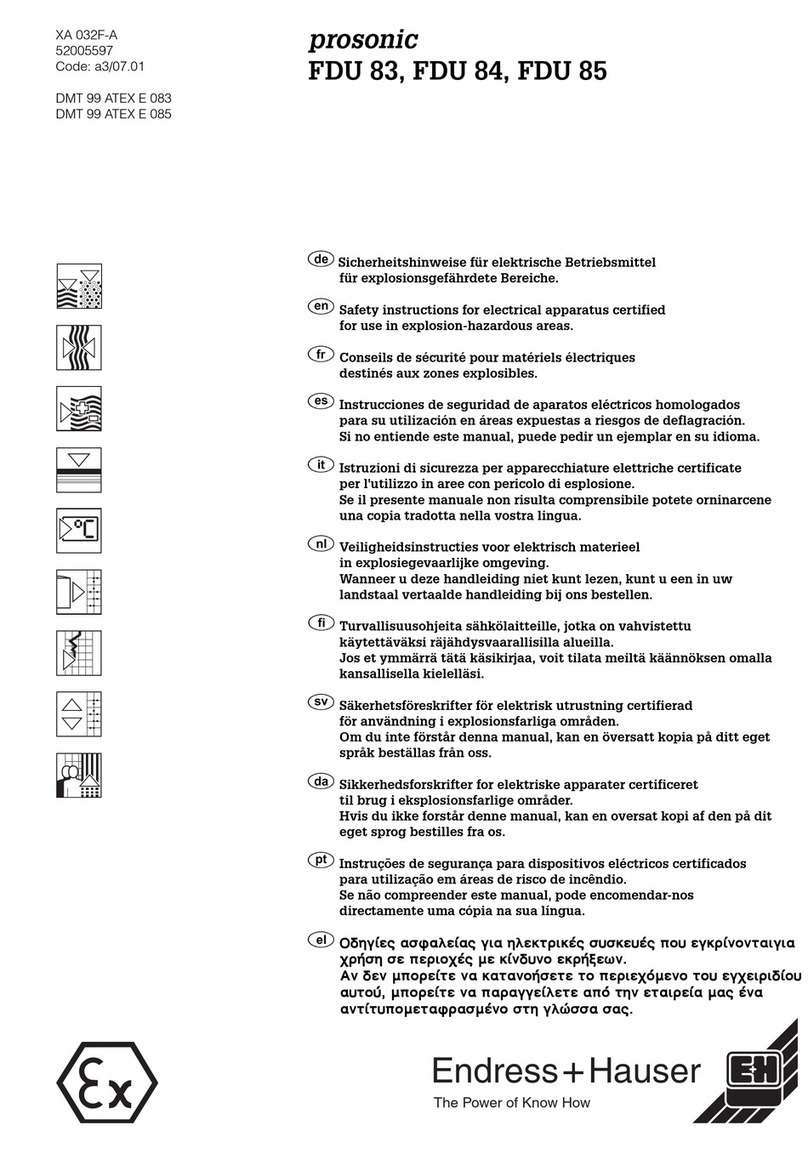
Endress+Hauser
Endress+Hauser Prosonic FDU83 Safety instructions for electrical apparatus certified for use in explosion-hazardous areas
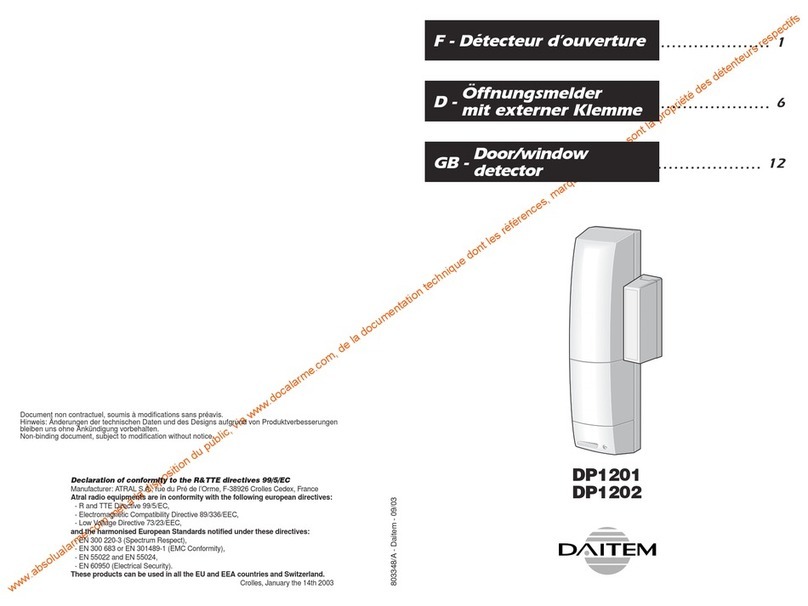
DAITEM
DAITEM DP1201 manual
Inficon
Inficon TEK-Mate operating manual
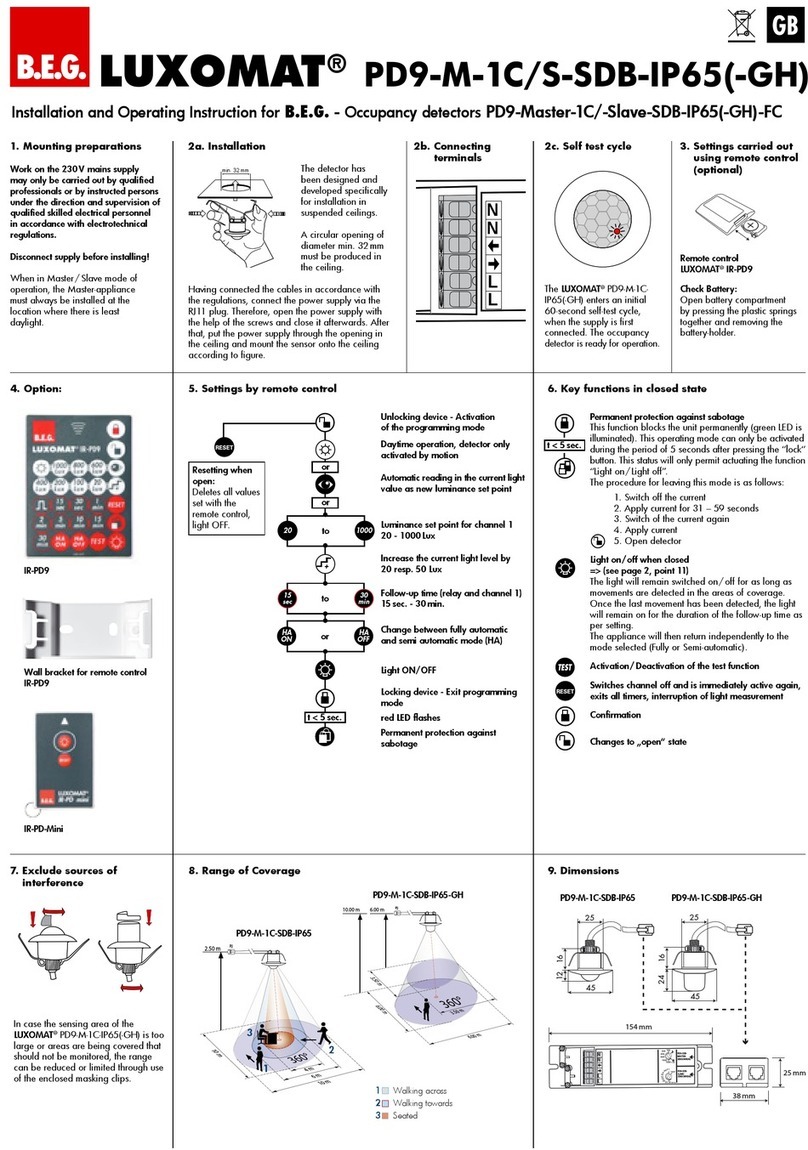
LUXOMAT
LUXOMAT PD9-M-1C-SDB-IP65 Installation and operating instruction manual
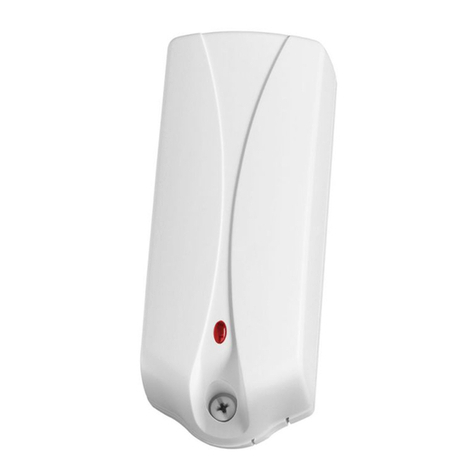
Visonic
Visonic MCT-560 installation instructions
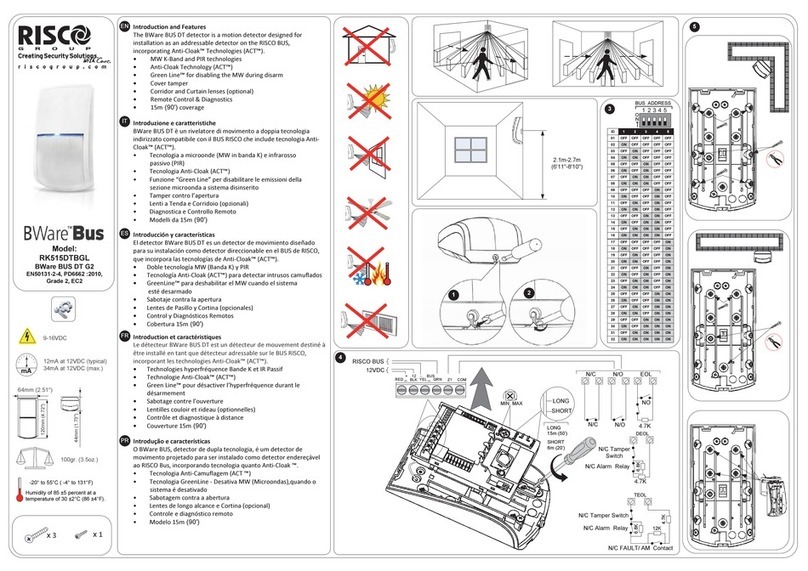
Risco
Risco Bware BUS DT G2 quick start guide
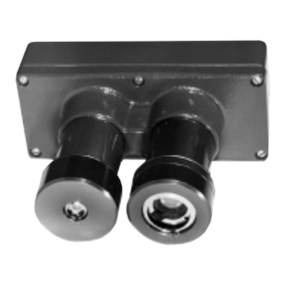
Det-Tronics
Det-Tronics U7652 instructions
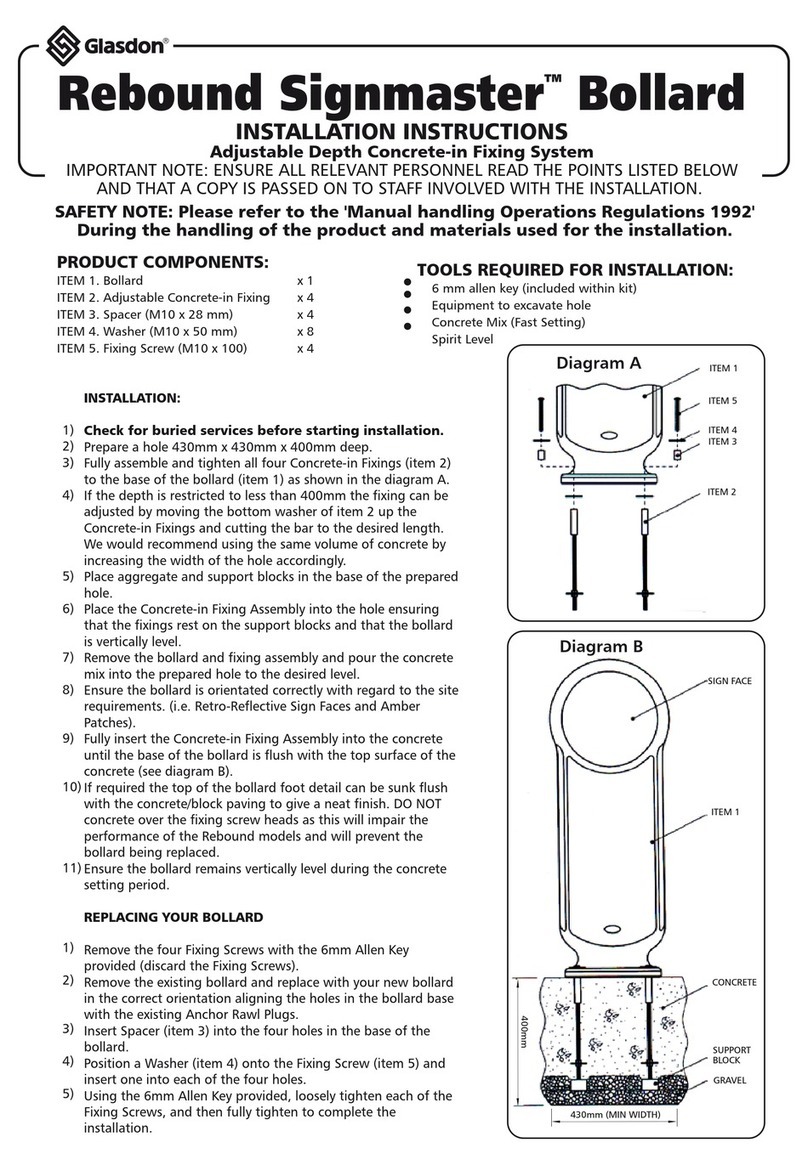
Glasdon
Glasdon Rebound Signmaster installation instructions
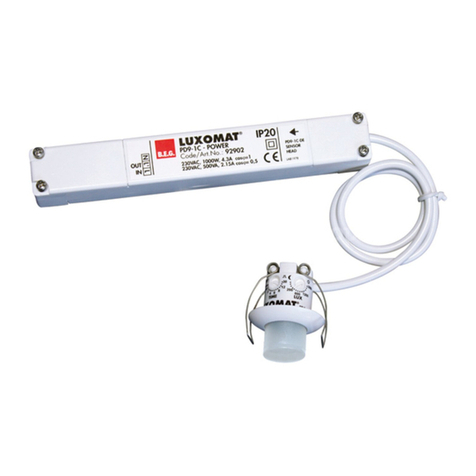
B.E.G.
B.E.G. LUXOMAT PD9-M-1C+HVAC Installation and operating instruction
